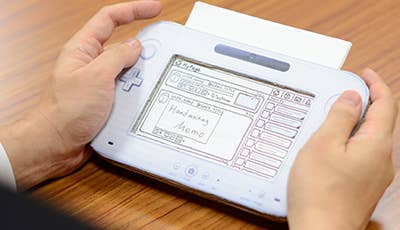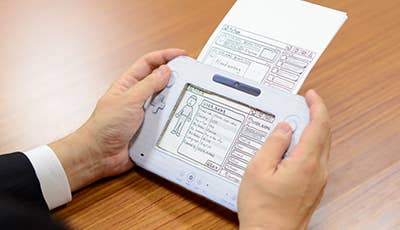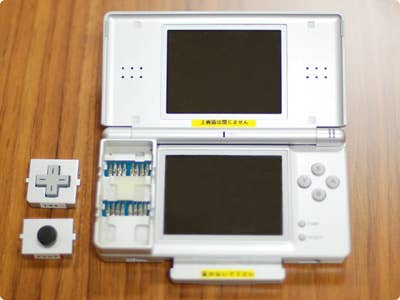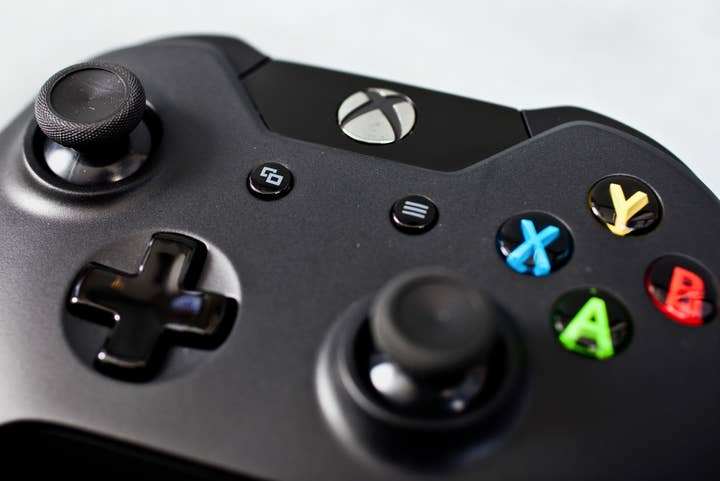What the Xbox One Controller Says About Microsoft... and Nintendo
Jeremy Parish can't help but notice philosophical differences between Microsoft and Nintendo
Even though Microsoft's mantra for its Kinect motion-tracking peripheral has always been, "You are the controller," and even though Kinect is a mandatory feature of the newly revealed Xbox One, the old-fashioned buttons-and-thumbsticks gamepad won't be falling by the wayside in the coming generation. Quite the contrary. While the company only briefly touched on the new system's controller in its hour-long console unveiling yesterday, the latest iteration of the Xbox gamepad dominated its behind-the-scenes follow-up demonstrations for assembled members of the press.
While some view the presence of both Kinect and a traditional controller in the same package as a symptom of Xbox One's uncertain focus -- is it for hardcore gamers? Casual players? Both? Neither? -- for dedicated fans the new pad offered one of the few concessions Microsoft seemed willing to make toward its core audience. Amidst exhaustive talk of instant-on television and fantasy football, the Xbox One controller offered reassuring familiarity. Microsoft may not have had much to say about gaming yesterday, but with an interface like this in the works, video games clearly remain a basic pillar of the Xbox brand.
"Where Microsoft prides itself on its cutting-edge design and testing systems, Nintendo happily shows off a comically primitive starting point instead"
Xbox One's gamepad also neatly embodies Microsoft's philosophy of perfection through refinement... usually from a starting point that's anything but perfect. As with so many of the company's ventures, their first controller was a mess: The original Xbox shipped with a massive slab of plastic that most gamers found nearly unusable due to its girth and bulk. While that oversized design has its fans (they affectionately refer to it as "The Duke"), Xbox One's gamepad follows a line of evolution from the downscaled Xbox Controller S and through the Xbox 360's wireless controller.
In fact, Xbox One's gamepad resembles nothing so much as a sleeker, slightly more angular take on its predecessor. They're almost exactly the same size, have incredibly similar contours, and use nearly identical button layouts. The fine details make the difference: The seams of the plastic shell have been relocated to the angular joint between front and back, the trigger buttons feature moderate force-feedback (potentially an interesting feature, though mostly just distracting in the barely interactive PC-based demos Microsoft had on display), and the battery bulge has been integrated cleanly into the case. The biggest improvement definitely comes in the D-pad, which was notoriously terrible on 360. Now, the internal mount for the D-pad has been moved closer to the surface, so it handles tightly and -- one assumes -- more responsively.

What I found most interesting about the Xbox One gamepad, however, wasn't a feature of the system itself but rather the process through which it's been designed. Microsoft has developed a rapid iteration process for the controller design (and the case as well) with the use of CAD software and 3D printers. Rather than taking the old approach of carving pieces meticulously and slowly revising their design, the hardware team can throw together several concepts on the computer and send them immediately to their 3D printer to test. Daily iteration and prototyping is now a part of the Xbox design process. It's an impressive process to behold, and it's borne obvious fruit in the form of a genuinely excellent controller.
This high-tech development process makes a particularly fascinating counterpoint to Nintendo's prototyping process for their Wii U controller. In an Iwata Asks roundtable published last fall, the company's president had a good laugh with his hardware team about their own process. Rather than making use of high-end plastic fabrication, the Wii U controller prototype involved cardboard mockups:


Now, given the disparity in the hardware power of Wii U and Xbox One, this might seem like an invitation to make unkind remarks about Nintendo's machine. But let's keep things in perspective. The glimpses both parties have offered of their in-development controllers surely don't represent the sum total of their prototyping systems. Microsoft probably used primitive roughs at the start, just as Nintendo surely must have fabricated working plastic models of the Wii U gamepad. After all, an earlier Iwata Asks featured a work-in-progress version of the 3DS hardware that was actually more sophisticated than the finished product, allowing players to reconfigure controller input layouts.


No, the real story here is in the fact that these are the parts each company elected to reveal of their respective processes. Where Microsoft prides itself on its cutting-edge design and testing systems, Nintendo happily shows off a comically primitive starting point instead. It's an apt metaphor for the companies themselves: Microsoft, the American sci-fi goliath straddling dozens of acres of Redmond real estate as it strives ever for the future, and Nintendo, the little Japanese playing card company that revels in nostalgia and family-friendly play. There's a reason many people see them as complementary rather than competitive (hence the "Wii60" meme of a few years back). The result? A strange world where Nintendo offers a controller that's practically a game system in and of itself, yet Microsoft's is the one that's somehow more futuristic.
Jeremy Parish is Games Editor at USgamer. USgamer is an upcoming consumer website published by Gamer Network and launching in early June, and will be located at http://www.usgamer.net.








